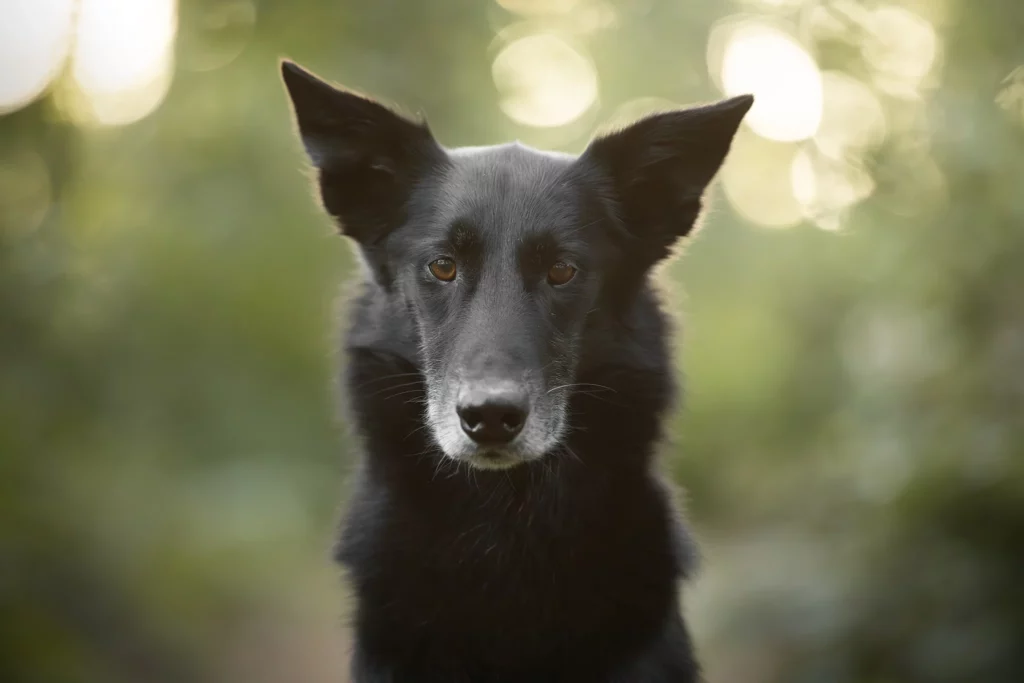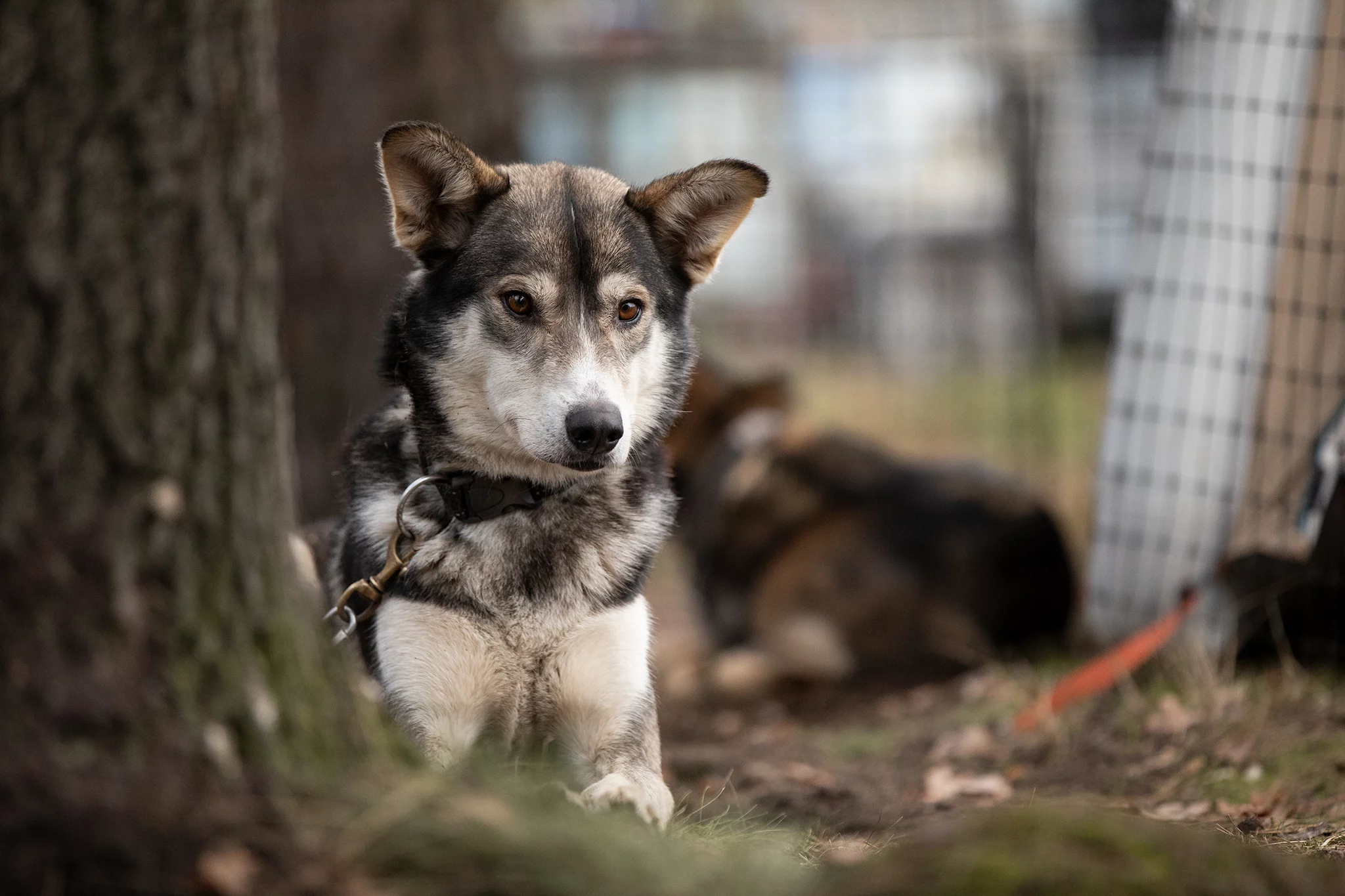Height
50cm – 70cm

The Alaskan Husky has a long history as a sled dog. The use of sled dogs began over 4000 years ago in Siberia by peoples such as the Samoyeds, Koryaks and Chukchi.
These dogs were crucial for mobility and survival in the Arctic regions.
Over the centuries, different types of sled dogs were developed, from large and powerful polar dogs in the north to leaner Indian dogs further south.
A significant turning point for sled dogs was the gold rush period in Alaska, when they were not only used as a means of transport, but also in races and competitions.
The first professional sled dog race, the ‘All Alaska Sweepstakes’, took place in 1908 and demonstrated the need for specialised dogs for such tasks. The targeted breeding of Alaskan Huskies began.
The breeding of Alaskan Huskies therefore increasingly focussed on the requirements of sled dog sport.
The original Chukotka dogs were used and crossed with Native American dogs and later with bird dogs, pointers and greyhounds. This resulted in numerous breeding lines that were designed for low aggression, good social behaviour and a strong drive to run.
Even today, the Alaskan Husky is primarily bred for performance and is mainly kept by mushers who are active in sled dog sports.
Alaskan Huskies are not pedigree dogs and are not subject to regulated breeding.
Apart from racing performance, every breeder has different requirements and ideals in breeding, which is why Alaskans are sometimes very different in appearance and character at first glance.
As there are few demands on the character of Alaskan Huskies apart from performance in races and compatibility with other dogs and people, they can vary greatly in temperament.
On the whole, they should be friendly to people and other dogs and have a strong desire to run, which makes them hard-working sled dogs. Alaskan Huskies are often referred to as marathon runners among sled dogs and well-trained dogs can run long distances for several days in a row.
Many Alaskan Huskies also have a strong hunting instinct.
These dogs are not bred for life in a domestic environment, so it is difficult to predict whether a life as a pet dog is suitable for them.
It is important to remember that the Alaskan Husky was primarily bred for physical performance and that important skills such as stress resistance play a rather subordinate role in everyday human life.

Appearance plays a subordinate role in the Alaskan Husky, which is why it varies so widely.
In general, however, they are medium-sized to large, athletically built dogs with a relatively short double coat with a dense undercoat and a hard, weatherproof outer coat.
Their weight, size and basic structure vary depending on the sledding task for which they were bred and whether they are to run short, medium or long distance races. In general, however, they are built for endurance and energy-efficient movements.
Alaskan Huskies come in all kinds of colours, with blue, brown or yellow eyes, floppy ears or prick ears.

As health examinations of Alaskan Huskies are rather rare, little is known about their general health.
One disease specifically known and testable for the Alaskan is AHE, Alaskan Husky Encephalopathy, which leads to death in puppyhood.
No precise statement can be made about other diseases due to a lack of tests and documentation.
In terms of care, they are generally fairly undemanding.
01.08.2021
Alaskan Husky04.08.2018
Alaskan Husky